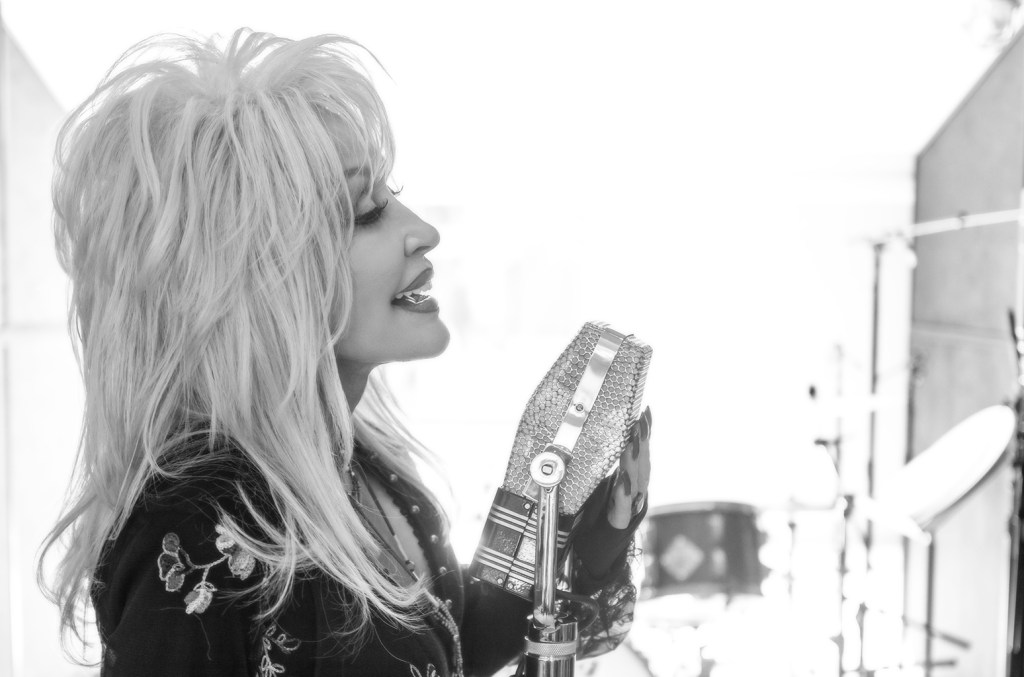Ahead of Dolly Parton‘s upcoming book Behind The Seams, which releases Oct. 17 and delves into decades worth of Parton’s iconic fashions from rhinestoned dresses to fringed jumpsuits, the 10-time Grammy winner discussed the pros and cons of her glamorous image in an interview with The Guardian.
Parton said that though many people failed to take her seriously over the years due to her famous image, she refused to change for anyone and kept her focus on her work. “Actually,” she says, “my look came from a very serious place. That’s how I thought I looked best. Sometimes that’s worked for me, sometimes it can work against you. It took me probably years longer to be taken serious, but I wasn’t willing to change it, and I figured if I had the talent, it’d show up sooner or later.”
Since releasing her debut country single, “Dumb Blonde,” in 1967, Parton has earned two No. 1 Billboard Hot 100 hits (“Islands in the Stream” and “9 to 5”) as well as 25 No. 1 Hot Country Songs hits. She’s been inducted as a member of the Grand Ole Opry, Country Music Hall of Fame and the Rock and Roll Hall of Fame, and earned the Country Music Association’s top honor, entertainer of the year, in 1978.
Parton added, especially as a woman in the 1960s and 1970s music industry, she was regularly dismissed by industry executives — but she didn’t back down.
“I would just say, ‘I think I have something that we can all make some money off of, and get over the fact that I’m a girl here, because my mind is on something else.’ I always knew how to maneuver in a crowd of men,” she said, noting that she grew with numerous brothers and uncles. “I never slept with anybody to get ahead, because to me it wouldn’t be worth it. That don’t usually work in the long haul either.”
She also noted that she did face sexual harassment along the way. “Oh, I did, but I always knew how to put a man in his place without making him feel bad. If sometimes that don’t work, I’m also strong as a boy – I know how to push you off and get the hell away from you.” Asked whether she’s had to push back against harassment both in her personal life and in her career, she said, “Both. And that’s a very uncomfortable situation. I was always able to get away before [a serious assault] would happen, but I feel sorry because some women are not able and some men are that aggressive.”
Parton’s story of modeling her image after the “town tramp,” as she says — a woman who wore high heels, red lipstick and low-cut tops — is well-known. Parton told The Guardian that her father and grandfather strongly disagreed with her choices, and at times, her grandfather physically punished her for it.
“I was willing to pay for it,” Parton said. “I’m very sensitive, I didn’t like being disciplined – it hurt my feelings so bad to be scolded or whipped or whatever. But sometimes there’s just that part of you that’s willing, if you want something bad enough, to go for it.”
The wide-ranging interview also finds Parton discussing her reason for deciding early in her career to not delve too deeply into political situations.
“Because you’re going to lose half your audience,” she said. “Even within my own family, especially the last few years since Trump and Biden, all that, it’s like we can’t even go to a family dinner any more. Especially if people are drinking – they get in a damn fight at the table. Don’t get so trapped where if you’re a Republican, you got to be this way, if you’re Democrat, you got to be that way. You’re not allowed to think nothing else. Well, how crippling is that? I’ve got as many Democrats as I do Republicans as fans, and I’m not going to insult any of them because I care about all of them. I ain’t that good a Christian to think that I am so good that I can judge people. That’s God’s job, not mine. So as far as politics, I hate politics. Hate politics.”
Parton also recently announced a four-part radio series, What Would Dolly Do?, set to air Wednesdays at 8 p.m. ET on Apple Music 1, beginning Oct. 25. The first episode features Parton with co-host Kelleigh Bannen, and finds Parton discussing her iconic image and career, as well as her book Behind the Seams.





